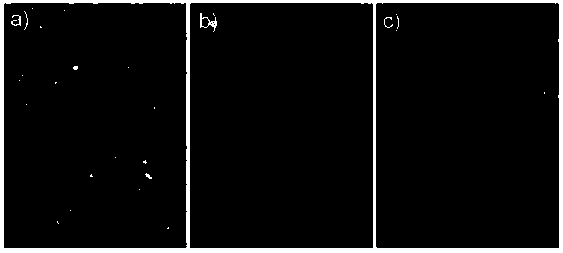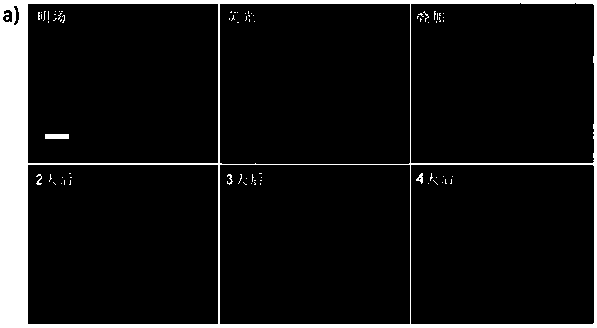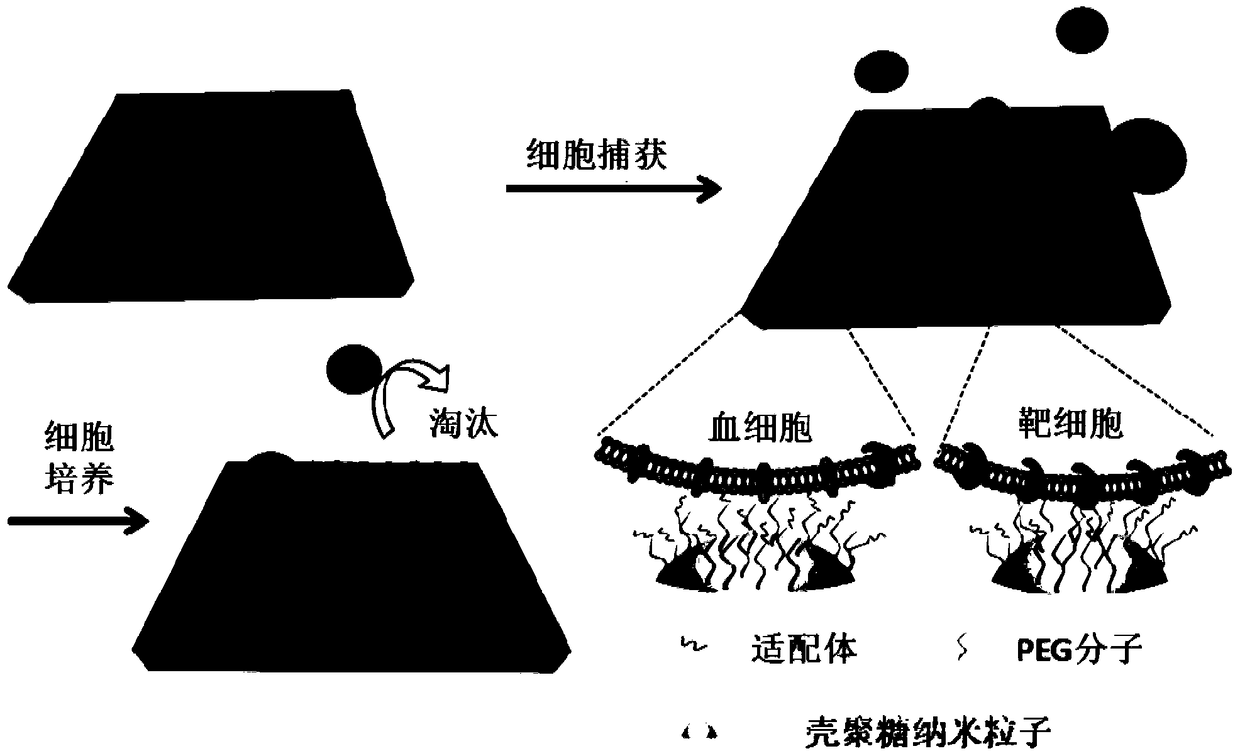A CTC capture and purification substrate based on chitosan nanoparticles and its preparation method
A technology of chitosan nanoparticles and particles, applied in the field of medical clinical CTC separation, to achieve the effect of increasing the number, strong practicability, and good biological activity
- Summary
- Abstract
- Description
- Claims
- Application Information
AI Technical Summary
Problems solved by technology
Method used
Image
Examples
Embodiment 1
[0063] Embodiment 1 The specific steps of the preparation method of the CTC capture and purification substrate based on chitosan nanoparticles are as follows:
[0064] a) Using low molecular weight chitosan in an organic acid system, after stirring for 4-8 hours at room temperature, a homogeneous transparent chitosan solution is obtained.
[0065] b) electrospray the chitosan solution in step a for 0.1-4h in an electrospinning device, and prepare chitosan nanoparticles on the surface of the glass substrate. Chitosan nanoparticles surface P1, P2, P3, P4, P5 with different nanometer particle size and density were prepared by adjusting the properties of electrospray liquid, electrospray parameters and electrospray time. The surface structure and morphology of prepared different chitosan nanoparticles are shown in figure 2 .
[0066] c) Place the surface of chitosan nanoparticles in step b in ammonia water / methanol solution (the volume ratio of ammonia water to methanol is 4:96...
Embodiment 2
[0070] Example 2 Using the EpCAM-positive breast cancer cell line MCF-7 as a model cell, the capture behavior of P4 on the nanostructured surface to cancer cells was investigated. Figure 4 Different capture behaviors of MCF-7 cells by P4 surface with three different modified interfaces. The surface modified by PEG-aptamer ( Figure 4 , a)) the maximum amount of cell capture, while the PEG-modified surface ( Figure 4 , c)) The amount of cell adhesion is minimal.
Embodiment 3
[0071] Example 3 Using the EpCAM-positive breast cancer cell line MCF-7 as a model cell, the capture efficiency and specificity of different micro-nano structured surfaces for cancer cells were systematically investigated. At the same time, a bare interface without any modification and an interface only modified with PEG were constructed on each nanostructured surface as controls. MCF-7 cells that have been cultured for two days and in good growth state were digested and peeled off with 0.25% trypsin, then discarded the trypsin solution, added fresh culture medium to blow the cells evenly, counted the cells, and adjusted the cell suspension to 10 5 / ml. Place the modified nano-substrate in a 24-well plate, inject 1ml of the prepared cell suspension into each well, incubate in the cell culture incubator for 10-60min, wash with PBS for 3-5 times, and use a fluorescence microscope Captured cells were observed and counted. The experimental results showed that the amount of cell ...
PUM
| Property | Measurement | Unit |
|---|---|---|
| particle diameter | aaaaa | aaaaa |
Abstract
Description
Claims
Application Information
 Login to View More
Login to View More - R&D
- Intellectual Property
- Life Sciences
- Materials
- Tech Scout
- Unparalleled Data Quality
- Higher Quality Content
- 60% Fewer Hallucinations
Browse by: Latest US Patents, China's latest patents, Technical Efficacy Thesaurus, Application Domain, Technology Topic, Popular Technical Reports.
© 2025 PatSnap. All rights reserved.Legal|Privacy policy|Modern Slavery Act Transparency Statement|Sitemap|About US| Contact US: help@patsnap.com



